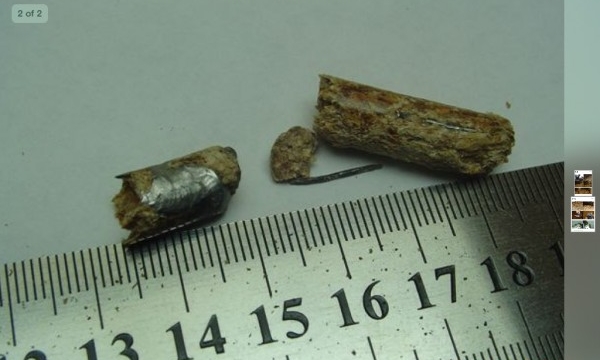Wood pellets: Contamination
It is essential for the pellets to be produced from clean wood coming from the forest or sawmills. No recycling wood is allowed. Pellets should not have any chemical or mechanical pollution.
In this connection very important seems to be presence of toxic chemicals and content of heavy metals such as Pb, Hg, Sn, Zn, Co, etc. Contamination of the pellets may occur in the pellet plant in a case of using not pure raw material (recycling wood, especially demolition wood, residue from the furniture factories containing glue, paint, etc). In a case pellet plant equipment is old or not getting a good maintenance, metal parts of the machinery, like small metal pieces and screws may get into the pellet cargo. Further source of impurities can be storages of the pellets at the pellet plant or a port warehouse. Also, the transport (lorries) and holds of vessels, in a case they are not cleaned properly from the previous cargo. To avoid this problem, a Certificate of Hold Cleanliness is issued by the Control Organization before loading. It is necessary to appoint an Independent Control Organisation to monitor and supervise the loading, as it helps to avoid many problems already in the loading port.
SGS Baltic States implemented a metal detection in the pellet cargoes with Industrial Metal Detector AF-350 produced by White’s Electronic Ltd, UK.The surface of the stock is inspected on all physically accessible points. In a case some metal pieces are found, a calculation of the quantity of the metal in the whole cargo in grams per 1.000 mt is made. Metal detection has helped to find even very small pieces of metal. This method can be used when there is a smallest suspicion of metal contamination.
In a case there is a suspicion of radioactive contamination of the pellets, portable radiometers are used. As per investigation of SGS Baltic States , the maximum gamma radiation expressed as a dose equivalent rate, measured from accessible points of the material, was found to be 0,012 micro Sieverts per hour. The ambient background gamma radiation expressed as dose equivalent in the immediate area was found to be 0,004 and 0,016 micro Sieverts per hour. It means that maximum recorded radiation of the goods was within the range of the ambient background radiation. According to our tests of wood pellet samples, radioactive isotopes Cs 134+ Cs 137 with gamma radiometry were found to be 24 Bq/kg and radioactive isotopes Cs 90 with beta radiometry were below 1Bq/kg. Radioactivity level was not exceeding permitted 600 Becquerel per kg. Contaminated pellets can be refused by the end user after unloading of the vessel. Rejection of the pellets creates a huge problem for the supplier, as firstly, it is a breach of the contract and secondly, it is practically impossible to sell a rejected cargo for a good price. Pellets contaminated with metal, stones, etc., may create a fire in the hammer mills of the power plant and in this case the seller will be reliable for the damages created to the plant.
Lack of control over the production process, quality of the raw material and negligence at the loading of a vessel, can create problems of pellet contamination and such cargo has a high risk of being rejected at unloading port.










